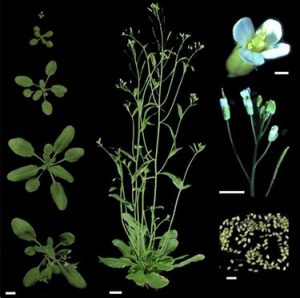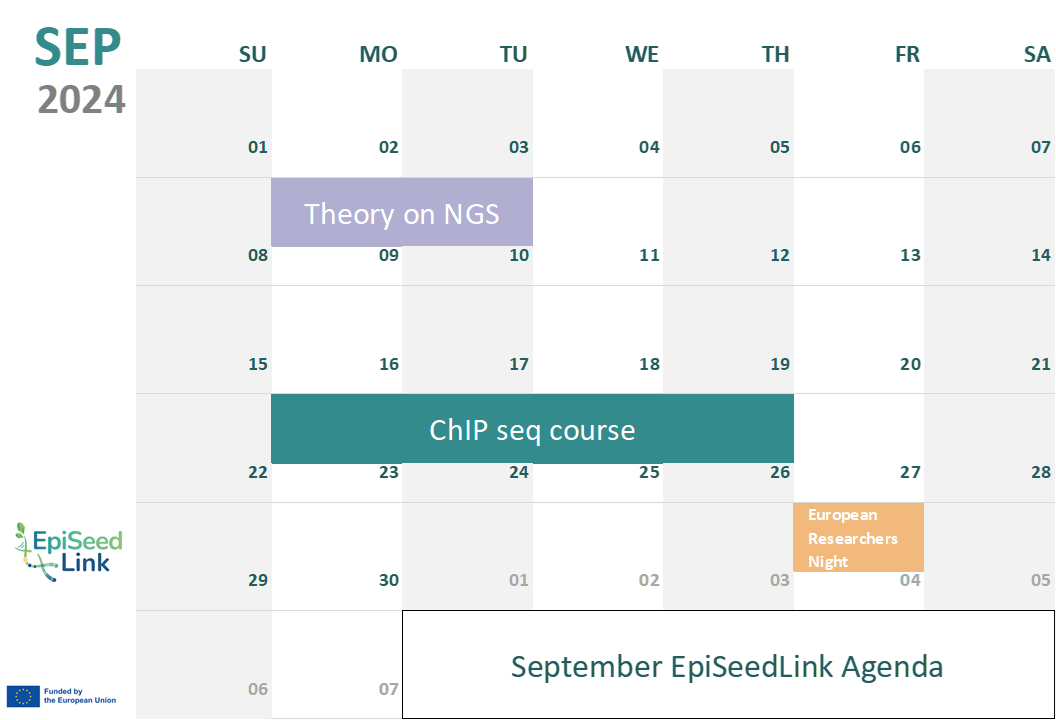The moon, the plants, and the humans
How the story started
When it was proposed to do science outreach material as part of the EpiseedLink program, my first thought was to talk about curiosities about plants. Then, I asked my friends and family what they wanted to know about plants or which questions they had about plants. Then, my brother came up with a very interesting story.
In Brazil, we have a martial art called Capoeira, which mixes dance, music, and fighting. This martial art surged during the colonial period of the country and was developed by Africans brought to Brazil as slaves. Capoeira is closely related to the resistance of Africans and African descendants against slavery and the fight against racism. Nowadays, it is one of the symbols of Brazilian culture.
Capoeira uses different musical instruments and one of them is the berimbau. This instrument is mainly made of the wood of a tree called Biriba. When he was a Capoeira student, my bro ther heard his master saying that to make the instrument berimbau, you need to cut the tree in the evening, during the new moon or waning moon. The reason is that the probability of the wood rotting is lower if cut during this period.
ther heard his master saying that to make the instrument berimbau, you need to cut the tree in the evening, during the new moon or waning moon. The reason is that the probability of the wood rotting is lower if cut during this period.
This kind of knowledge is known as traditional knowledge, a result of observation, technologies, and practices developed by indigenous people, and passed down generation by generation. As a scientist, this made me very curious. How does the moon affect plant development? What do we know about this? Which other cultures made similar observations and have similar practices? Inspired by this story, I started my investigation to answer these questions.
The moon and its effect on animals
The most known effect of the moon on our planet is the tide. The gravity force of the moon pushes the water of oceans, increasing the water level. This happens twice a day, in a cycle known as the tidal cycle. The level of the seas increases more when the moon and the sun are aligned during the full and new moon. The gravitational force of these two celestial bodies sums up, generating what we call the spring tides. Also, the different moon phases  generate differences in the amount of light during the night, in a cycle of around 30 days.
generate differences in the amount of light during the night, in a cycle of around 30 days.
These differences in gravity and light due to the moon are detected by animals. For example, research indicates that the spawn of corals is dependent on moonlight intensity. Different species of nightjars follow the moon phases in their nesting period. The females of a crab species in Japan go down the mountain to lay their eggs during spring tides. These and other examples show the influence of the moon on animals' reproduction, physiology, and behavior.
The gravity effect on plants
What about the plants? One of the most known effects of gravitational force on plants being studied is the diameter of the trees and leaf movement. Under the natural variation of the light of day and night, the diameter of a tree increases more during the day, in a cycle of around 24h. However, if you put the tree in constant light, the diameter of the tree increases in a cycle of around 25h. This cycle is coincident with the variance in the local gravitational force. This local gravitational force is the result of the sum of the gravitational force of the moon and the sun, called the lunisolar gravitational force. It is supposed that when this force increases, it pulls the water in the tree, like the tides in the ocean.
As expected, the movement of the water in the trunk and the diameter of the truck seem to be correlated to the lunisolar gravitational force. It was also identified that the leaf movement of beans synchronized with the lunisolar gravitational force. If the plant can perceive the gravitational force, if there is a molecular mechanism associated with this, and how deep the effect of the lunisolar gravitational force is in the plant growth and development still needs to be investigated.
The light effect on plants
Even though the light of the moon is not enough to keep the plant alive, substituting the sun, this light seems to be detected by the plants. The moonlight is the result of the sunlight being reflected by the moon. However, the composition of these two lights is not the same. The moonlight is composed mainly of blue light in very low energy, while sunlight is composed of a long range of wavelengths at a high energy level. Then, it is expected that plants do not detect moonlight and sunlight equally.
The study of Breitler and collaborators investigates the detection of moonlight by plants from a molecular perspective. They discover that from the different proteins that detect light, known as photoreceptors, only one is expressed during full moon compared to new moon. They also detect many other genes that are affected by moonlight, having differences in their expression. What are the observable effects of the moonlight beyond the molecular effect must still be investigated. But since the moonlight affects animals, plants that are directly affected by animal predation, for example, may also use the moonlight as a cue.
The moon phases effect on plants
In Central America, more specifically Belize, Panama and Puerto Rico, indigenous people have the tradition of harvesting natural resources in the full moon. They perceive that the palm leaves collected during the full moon, for example, are more durable than the ones collected in other periods. These palm leaves are harvested for different reasons, one of the uses is to construct the rooftop of houses.
The study of Vogt and co llaborators focuses on this tradition and tries to associate the full moon with the period when herbivores act more. Plants do not let themselves be consumed by herbivores passively. They defend themselves by producing chemical compounds. These chemical compounds can increase the durability of the plant and their survival in front of herbivores. What the scientists did was quantify chemical compounds associated with plant defense and durability in different moon phases. They identified that the concentration of some of the compounds quantified changed according to the moon phase. In the end, they suggest that plants produce more compounds against herbivores during the full moon. These compounds also help the durability of the leaves. The indigenous people, therefore, started to perceive that the durability increased during this period because the plant was defending itself from herbivores.
llaborators focuses on this tradition and tries to associate the full moon with the period when herbivores act more. Plants do not let themselves be consumed by herbivores passively. They defend themselves by producing chemical compounds. These chemical compounds can increase the durability of the plant and their survival in front of herbivores. What the scientists did was quantify chemical compounds associated with plant defense and durability in different moon phases. They identified that the concentration of some of the compounds quantified changed according to the moon phase. In the end, they suggest that plants produce more compounds against herbivores during the full moon. These compounds also help the durability of the leaves. The indigenous people, therefore, started to perceive that the durability increased during this period because the plant was defending itself from herbivores.
Conclusion
When to sow, when to harvest, when to cut the wood. Besides the period to cut the birimba to construct the musical instrument used in Capoeira or when to cut palm leaves to construct houses, a range of traditional human practices are correlated to the moon. Like the light and the temperature, the moon has a predictable cycle, inputting light and gravitational cues to the plants. Humans in different parts of the world observed this, giving rise to diverse traditional practices passed down from generation to generation in different human societies. Some of these practices were and are being studied by scientists. We are still in the initial stage of understanding how it all works, but gradually, the influence of the moon over plants will be unveiled.
Author: Maira Marins Dourado, PhD Student EpiSeedLink Marie Skłodowska-Curie Actions
Reviewed by: Ana Paula Avelino dos Santos
Curious? These are some of the references used in this article, that you may find interesting:
About traditional knowledge:
https://press.un.org/en/2019/hr5431.doc.htm
About Capoeira:
About human traditions, plants, and the moon:
http://www.soin-de-la-terre.org/wp-content/uploads/PlantsandtheMoon.pdf
About tides:
About animals and the moon:
https://www.ncbi.nlm.nih.gov/pmc/articles/PMC3712431/
About lunisolar gravity and plants:
https://www.ncbi.nlm.nih.gov/pmc/articles/PMC6215047/
About moonlight and plants:
https://www.ncbi.nlm.nih.gov/pmc/articles/PMC6961272/
About secondary metabolites and the moon:
https://www.jstor.org/stable/4315291
A recent review about the plants and the moon:
https://www.ncbi.nlm.nih.gov/pmc/articles/PMC8866634/
Other references:
https://pubmed.ncbi.nlm.nih.gov/21002732/
http://www.soin-de-la-terre.org/wp-content/uploads/PlantsandtheMoon.pdf
https://link.springer.com/article/10.1007/s00709-010-0136-6
https://www.ncbi.nlm.nih.gov/pmc/articles/PMC6529214/#CIT0116
https://www.ncbi.nlm.nih.gov/pmc/articles/PMC6215041/
https://www.liebertpub.com/doi/epdf/10.1089/ast.2006.6.668
<a href="https://www.freepik.es/foto-gratis/hombres-entrenando-capoeira-playa_34305440.htm">Imagen de pikisuperstar</a> en Freepik
Arabidopsis thaliana vs. Brassica napus L.: A Tale of Two Cruciferous Crops!
Did you know that both, Arabidopsis thaliana and Brassica napus L., have taken center stage in the innovative EpiSeedLink project?
Arabidopsis thaliana and Brassica napus L. are two fascinating members of the Brassicaceae family, with distinctive characteristics and roles in the plant world. Let's explore their unique features and contributions!

🌿 Arabidopsis thaliana:
Commonly known as "rockcress," Arabidopsis thaliana is a model plant used extensively in scientific research. Its small size, typically reaching about 10-20 centimeters in height, and short lifecycle of about 6-8 weeks under optimal conditions make it ideal for studying plant genetics, development, and responses to environmental factors. Arabidopsis thaliana serves as a powerful tool in understanding fundamental processes in plants and has contributed significantly to advancements in biotechnology.

🥬 Brassica napus L. (Canola/Rapeseed):
Brassica napus L. is an essential oilseed crop widely cultivated for its high-quality vegetable oil, known as "canola oil." This versatile crop has diverse applications, from culinary use to industrial purposes, such as biofuel production. Brassica napus L. has a more extended growth cycle compared to Arabidopsis thaliana, around 5-6 months from planting to maturity making it an excellent candidate for studying agricultural practices and crop improvement.

Together, Arabidopsis thaliana and Brassica napus L. are igniting a new era of plant research through the EpiSeedLink project. By delving deep into their genomes and epigenomes, we hope to pave the way for exciting discoveries that will benefit global agriculture and ensure a more sustainable future.
Text by Kingsley Onyinye Ibeabuchi, PhD Student EpiSeedLink Marie Skłodowska-Curie Action
The frontal image about the differences between the two species by Shannon Skye Derman, PhD Student Marie Skłodowska-Curie Action EpiSeedLink
The regulatory landscape for plant biostimulants in the EU
Lecture presented as part of the training of doctoral students from the EpiSeedLink consortium in the Plant breeding course.
The conference is given by Dr. Thomas Leppin, EBIC (European Biostimulants Industry Council) Director-at-Large, and Regulatory Affairs Management by Compo Expert.
He explains to fellows the roadmap to launch a new biostimulant to the market.
September EpiSeedLink Agenda
EpiSeedLink resumes the training courses in September after summer.
Episeedlink´s fellows will learn about Next Generation Sequencing (NGS) in two courses, one theoretical online and the other practical at the CBGP.
- Theory on NGS. This training will provide theoretical background underlying NGS and library preparations. It will consist of lectures and practical exercises learning Fellows to make informed decisions regarding the appropriate sequencing platform, best approaches to prepare libraries from different types of samples (multiplexing, adaptor design), and experimental design (nr of replicates, reads/sample, controls required, etc). It will be online on the 4th and 5th of September. Tijs Bliek and Maike Stam (one of our Supervisors) will be the trainers. Both belong to the Swammerdam Institute for Life Sciences (SILS) from the University of Amsterdam (UVA).
- ChIP seq Course. This course will provide hands-on training in Chromatin Immunoprecipitation followed by sequencing (ChIP-seq) on Arabidopsis and oilseed rape leaves. Fellows will learn to prepare the biological material, crosslink, and carry out all steps of the ChIP protocol, to perform quality controls and qPCR validation, to isolate and quantify amounts of immunoprecipitated DNA, and to generate the libraries for NGS. The course will held at the Centro de Biotecnología y Genómica de Plantas (CBGP) in Madrid. It will be during the week of the 18th of September. The trainers will be Dr. Pedro Crevillén and Antón Abelenda, with the assistance of Dr. Manolo Piñeiro and Dr. José Antonio Jarillo. All of them are members of EpiSeedLink´s family at the CBGP.
- European Researchers Night. This is a Europe-wide event which attracts more than 1.5 million visitors each year and will certainly be happening near you. You will have the opportunity to learn about the interesting research projects going on close to you.
Introducing our Supervisors and his/her Institutions
It is time to meet the Supervisors of EpiSeedLink and the Hosting institutions where they are based in.
EpiSeedLink is composed of 14 skilled and internationally recognized leaders and 11 host institutions around Europe, including both the academic and the industrial sectors.
 Here is a representation of the supervisors and their institutions.
Here is a representation of the supervisors and their institutions.
The EpiSeedLink Supervisors are a distinguished group of well-renowned researchers hailing from various academic and industrial institutions across Europe. Their collective academic achievements and extensive experience make them prominent figures in the fields of science. They are engaged in a diverse range of research and activities encompassing Epigenetics, Genetics, Plant Physiology, Cell Biology, Molecular Biology, Seed Priming, and, which reflects their ability to bridge gaps between these interconnected disciplines and foster collaborations that drive scientific progress.
Individually, each supervisor boasts an impressive track record of contributions to scientific knowledge and innovation within their respective domains. With a wealth of academic merits, they have not only made significant advancements in their fields but have also demonstrated an exceptional ability to convey complex concepts effectively to students at various levels.

One of the remarkable strengths of the EpiSeedLink Supervisors lies in their extensive experience in guiding and mentoring students through their academic journeys. They have a proven track record of supervising Bachelor’s, Master’s, and PhD students, facilitating their growth and development as emerging researchers. Over the years, they have collectively guided more than 90 PhD students to successful graduations, nurturing the next generation of scientists with their mentorship and insights.
Moreover, their commitment to academic excellence extends beyond PhD supervision. The EpiSeedLink Supervisors have also overseen the progression of nearly 100 postdoctoral fellows, providing guidance and mentorship to early-career researchers as they navigate the challenges of their chosen fields.
For more information about each of our supervisors, click here. If you would like to know more about where each of our supervisors are based, click here. Every step of the way, our supervisors will ensure to provide adequate supervision to each of the EpiSeedLink Fellows, whose project descriptions can be found here.







